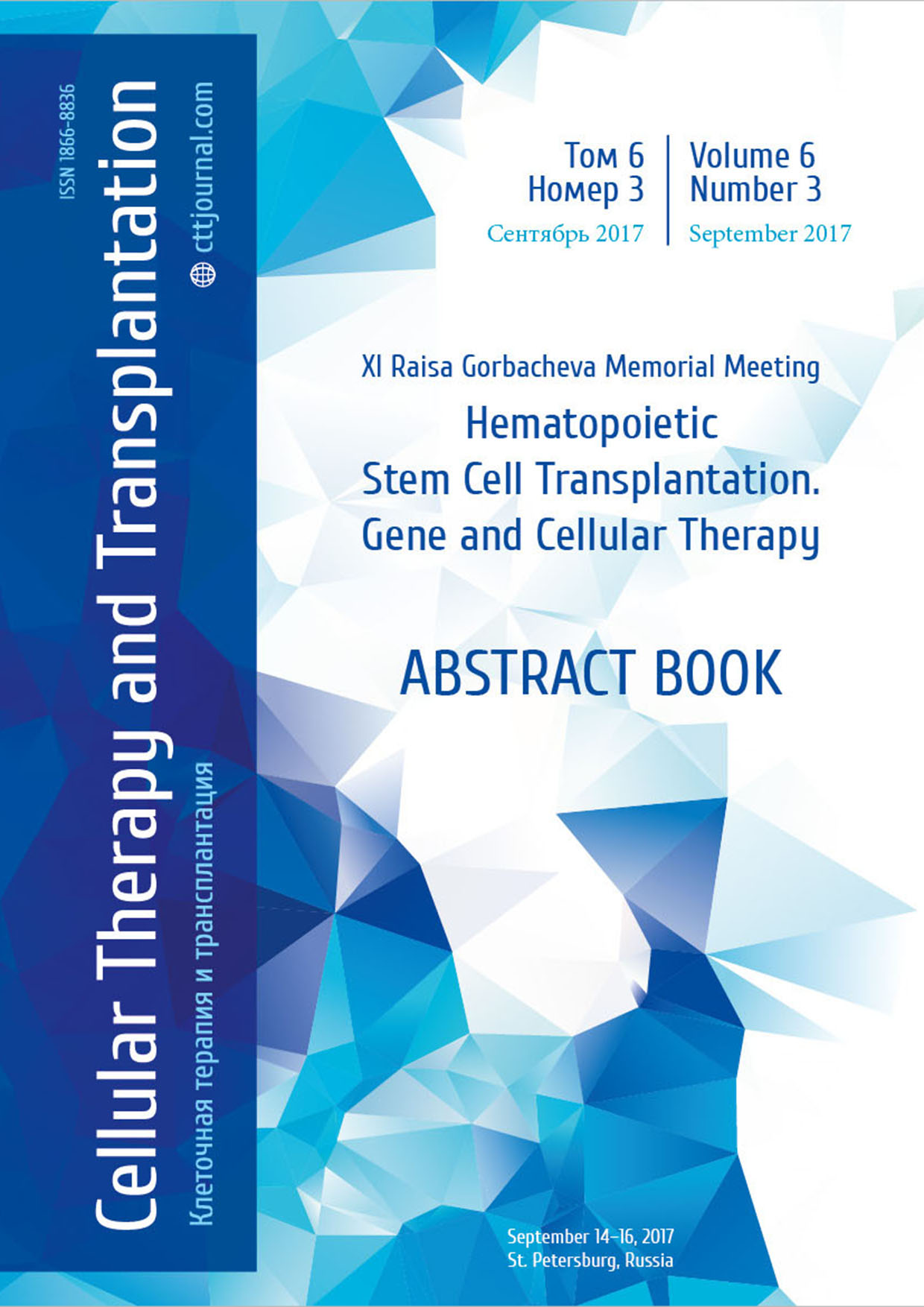Significance of donor NK-cells alloreactivity in allogeneic hematopoietic stem cells transplantation in children
Tatsiana V. Shman, Katsiaryna P. Vashkevich, Aleksandr A. Migas, Mihail A. Matveyenka, Aleksey V. Alekseichik, Nina V. Minakovskaya, Olga V. Aleinikova
Belarusian Research Center for Pediatric Oncology, Hematology and Immunology, Minsk, Belarus
Summary
Introduction
Natural killer (NK) cells as well as T-cells participate in allogeneic reactions after hematopoietic stem cell transplantation (HSCT). Alloreactive NK cells are able to damage recipient’s dendritic cells preventing graft versus host disease (GvHD) reaction, mediate anti-virus defense, and participate in graft-versus-leukemia reaction. Mismatches between inhibitory KIR (killer Ig-like receptor) of donor and HLA-I molecules of recipient comprise the basis of NK alloreactions. Our purpose was to study the influence of donor NK alloreactivity upon incidence of acute GvHD, CMV reactivation, and incidence of relapses after allogeneic HSCT in children.Patients and methods
KIR expression was assessed by PCR and flow cytometry. HLA genotyping was performed at the laboratories of The Republican Research & Production Center for Transfusiology and Medical Biotechnologies (Belarus), DKMS (Germany) and Belarusian Research Center for Pediatric Oncology, Hematology and Immunology.Analysis of NK cells alloreactivity performed according to the “receptor-ligand” model (as receptor-ligand mismatch). According to this model, donor NK cells are alloreactive towards recipient cells, when at least one of the studied inhibitory KIRs (KIR2DL1 and/or KIR2DL2/DL3 and/or KIR3DL1) do not have a corresponding ligand (HLA-C2 and/or HLA-C1 and/or HLA-Bw4) on recipient cells. HLA alleles for the KIR ligand groups were determined on the basis of HLA-I typing in recipient cells.
HLA alleles were aligned to KIR ligand groups (С1, С2, Bw4) using The Immuno Polymorphism Database (http://www.ebi.ac.uk/ipd/kir/ligand.html) and the published study results. Our study included 169 patients at the age of 6 months to 18 years old diagnosed with various blood disorders, i.e., acute leukemia (ALL, AML, biphenotypic), CML, MDS, lymphoblastic lymphoma, Burkitt lymphoma, aplastic anemia, Fankoni anemia and primary immunodeficiency diseases, and underwent allogeneic HSCT from 2007 to 2016 years.
Results
Donor NK alloreactivity was found in 59.2% of the studied allogeneic HSCT cases, according to the data of flow cytometry and PCR. In the group of patients with non-malignant diseases with RIC conditioning in the cases of donor NK alloreactivity, the incidence of acute GvHD was 44.8% compared with 76.9 % in the cases without detectable alloreactivity (р=0.05). For the patients with oncological diseases with myeloablative conditioning, no relations were found between donor NK alloreactivity and incidence of acute GvHD. In the group of patients with mismatched CMV status during the first 100 day after HSCT, the lowest rate of CMV reactivation was in the cases of donor NK alloreactivity with absence of C2 ligands (20% vs 48.2%; р=0.04).For the patients with nonmalignant diseases (n=43), we did not find significant differences in overall survival of patients, depending on NK-alloreactivity. However, in the group of patients with malignant diseases, the overall survival in the cases of alloreactivity was 68±6% as compared to the patients without alloreactivity (48±8%, р=0.1). For this group of patients, in the case of alloreactivity with absence of two ligands (С1-/Bw4- or С2-/Bw4-), the overall survival was 86±9% versus 45±8 % in the cases without alloreactivity (р=0.01). In the patients subjected to allogeneic HSCT for oncohematological diseases, a number of transplants was made from matched unrelated donor (63 patients out of 126). E.g., the relapse-free survival for this type of HSCT was 88±6 % in the case of donor NK alloreactivity, being only 57±13 % among the patients without alloreactivity (р=0.03).


